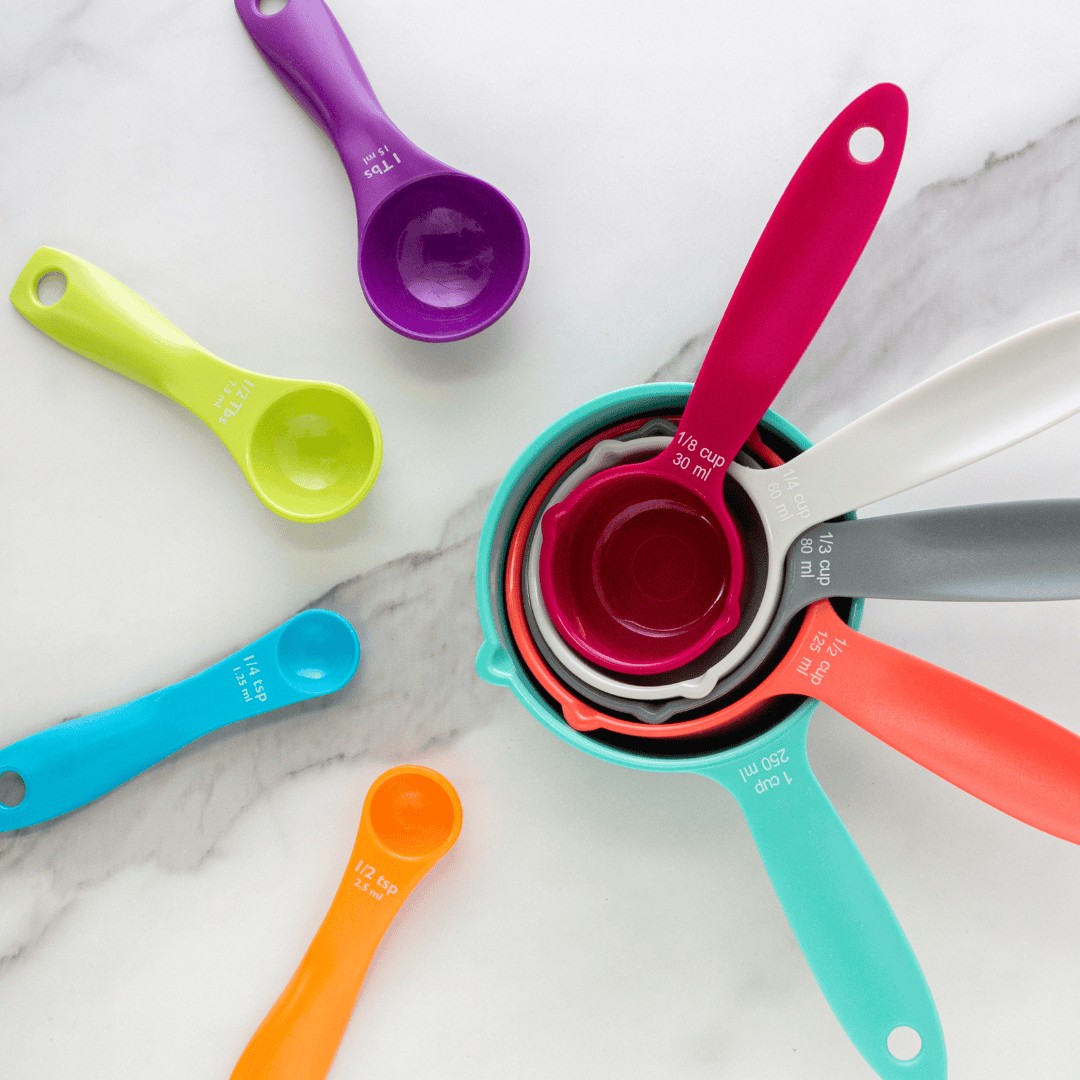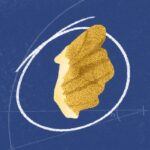Are you struggling to convert 1/3 cup into tablespoons for your favorite recipe? At HOW.EDU.VN, we simplify kitchen conversions, showing you that 1/3 cup equals 5 tablespoons plus 1 teaspoon. Master these essential cooking conversions and enhance your culinary precision, ensuring perfect results every time. For expert advice on cooking measurements, explore practical culinary tips and precise ingredient ratios on HOW.EDU.VN.
1. Understanding the Tablespoon to Cup Conversion
The key to navigating kitchen measurements lies in understanding the basic conversions. In the U.S. customary system, which is most commonly used in recipes, the relationship between cups and tablespoons is fundamental.
1 cup = 16 tablespoons
This conversion factor is your starting point. Knowing this, you can easily calculate fractions of a cup in terms of tablespoons. For instance, to find out how many tablespoons are in 1/3 cup, you divide the total number of tablespoons in a cup by 3.
Calculation:
16 tablespoons (in 1 cup) ÷ 3 = 5.33 tablespoons
However, since you can’t precisely measure 0.33 of a tablespoon using standard kitchen tools, you need to convert this decimal into a more practical measurement. This is where teaspoons come in. There are 3 teaspoons in a tablespoon, so:
- 33 tablespoon ≈ 1 teaspoon
Therefore, 1/3 cup is equal to 5 tablespoons and 1 teaspoon. This conversion is essential for both novice and experienced cooks because it allows for precise measurements even when you don’t have a full set of measuring cups. It’s particularly useful when scaling recipes or when you need to make small adjustments to ingredient quantities.
 Measuring spoons and cups
Measuring spoons and cups
2. Detailed Conversion: 1/3 Cup to Tablespoons and Teaspoons
To convert 1/3 cup into tablespoons and teaspoons, follow this detailed breakdown:
- Start with the basic conversion: 1 cup = 16 tablespoons.
- Calculate 1/3 of a cup: 16 tablespoons / 3 = 5.33 tablespoons.
- Separate the whole number: You have 5 full tablespoons.
- Convert the decimal part to teaspoons: 0.33 tablespoons * 3 teaspoons/tablespoon ≈ 1 teaspoon.
Therefore, 1/3 cup is precisely 5 tablespoons and 1 teaspoon. This accurate conversion is crucial in cooking, especially when precise measurements are needed to achieve the desired texture and flavor.
3. Conversion Chart: Quick Reference for Common Measurements
Having a quick reference chart can significantly speed up your cooking and baking processes. Here’s a handy conversion table for common cup to tablespoon measurements:
| Cups | Tablespoons |
|---|---|
| 1/8 cup | 2 tablespoons |
| 1/4 cup | 4 tablespoons |
| 1/3 cup | 5 tablespoons + 1 teaspoon |
| 1/2 cup | 8 tablespoons |
| 2/3 cup | 10 tablespoons + 2 teaspoons |
| 3/4 cup | 12 tablespoons |
| 1 cup | 16 tablespoons |
| 1 1/2 cups | 24 tablespoons |
| 2 cups | 32 tablespoons |
This chart is a valuable tool for anyone who frequently cooks or bakes. Keep it posted in your kitchen for quick and easy reference.
4. Why Accurate Measurements Matter in Cooking and Baking
In the culinary arts, accuracy in measurements is more than just a suggestion; it’s a necessity, especially in baking. The precision with which you measure ingredients can significantly impact the final product. This is because baking relies on chemical reactions between ingredients, and these reactions are highly sensitive to the proportions of the ingredients involved.
- Baking: In baking, using the exact amount of ingredients can be the difference between a fluffy cake and a dense one. For example, the ratio of flour to liquid affects the gluten development, which in turn affects the texture of the baked good. Too much flour can lead to a dry, crumbly product, while too little can result in a soggy, under-structured bake. Similarly, leavening agents like baking powder or baking soda need to be precisely measured to ensure the correct rise.
- Cooking: While cooking is often more forgiving, accurate measurements still play a crucial role, particularly when it comes to flavor balance and consistency. Sauces, for example, require precise ratios of ingredients to achieve the desired taste and thickness. Over- or under-seasoning can drastically alter the flavor profile of a dish. Also, in recipes that require reduction, the starting volume of liquid directly affects the final concentration of flavors.
- Consistency: Accurate measurements ensure consistency in your cooking. If you want to recreate a dish that turned out perfectly, knowing the exact proportions of ingredients is essential. This repeatability is what separates a good cook from a great one.
- Recipe Scaling: When scaling recipes up or down, accuracy becomes even more critical. Miscalculations can lead to disproportionate amounts of ingredients, throwing off the entire recipe. Understanding conversions, like knowing how many tablespoons are in 1/3 cup, allows you to scale recipes with confidence.
- Health and Dietary Needs: For those with specific dietary needs or restrictions, accurate measurements are vital for controlling nutritional content. Whether you’re monitoring sugar intake, managing sodium levels, or ensuring you’re meeting specific macronutrient goals, precise measurements are essential for maintaining a healthy diet.
5. Practical Applications in the Kitchen
Understanding that 1/3 cup equals 5 tablespoons and 1 teaspoon has numerous practical applications in the kitchen.
5.1. Adjusting Recipes on the Fly
Imagine you’re in the middle of baking and realize you’re short one of your measuring cups. Knowing the tablespoon conversion allows you to continue without interruption. For instance, if a recipe calls for 1/3 cup of oil and you only have tablespoons available, you can confidently use 5 tablespoons plus 1 teaspoon.
5.2. Scaling Recipes Up or Down
Scaling recipes is another area where this conversion is invaluable. If you want to halve a recipe that calls for 1/3 cup of an ingredient, you’ll need half of 5 tablespoons and 1 teaspoon. This would be 2 tablespoons and 1 1/2 teaspoons. Conversely, if you’re doubling a recipe, you’ll need 10 tablespoons and 2 teaspoons.
5.3. Substituting Ingredients
Sometimes, you may need to substitute an ingredient due to dietary restrictions or unavailability. Knowing the precise measurements helps you maintain the recipe’s integrity. For example, if you’re substituting applesauce for oil, you need to ensure you’re using the correct volume to maintain the proper moisture level in your baked goods.
5.4. Using Different Measuring Tools
Not all measuring tools are created equal. Knowing the conversions allows you to use different tools effectively. For example, if you only have a kitchen scale, you can convert the volume measurement to weight using online resources and then measure the ingredient accurately.
5.5. Precise Flavor Adjustments
In cooking, small adjustments to seasoning can make a big difference. If a recipe needs a little extra something, knowing the tablespoon conversion allows you to add spices or herbs in small, controlled increments. This is particularly useful when working with potent ingredients like chili powder or saffron.
6. Tips for Accurate Measuring in Baking
Achieving accuracy in baking requires more than just knowing the conversions; it also involves using the right techniques. Here are some tips to help you measure ingredients accurately every time:
6.1. Use the Right Tools
Invest in a good set of measuring cups and spoons. These should be specifically designed for either dry or liquid ingredients. Liquid measuring cups are typically clear and have a spout for easy pouring, while dry measuring cups are designed to be filled to the brim and leveled off.
6.2. Level Dry Ingredients
When measuring dry ingredients like flour or sugar, use a spoon to fill the measuring cup until it’s slightly overflowing. Then, use a flat edge, such as the back of a knife or a leveling tool, to remove the excess. This ensures you have the exact amount called for in the recipe.
6.3. Measure Liquids at Eye Level
When measuring liquids, place the measuring cup on a flat surface and pour the liquid in until it reaches the desired mark. Bend down to eye level to ensure the liquid is at the correct line. This prevents parallax errors, which can occur if you’re looking at the cup from an angle.
6.4. Weigh Ingredients When Possible
For the most accurate measurements, consider using a kitchen scale to weigh your ingredients. This is especially important in baking, where small variations can have a significant impact on the final product. Many recipes now include weight measurements in addition to volume measurements.
6.5. Sift Flour Before Measuring
If a recipe calls for sifted flour, sift it before measuring. Sifting aerates the flour, making it lighter and easier to incorporate into the batter. However, be sure to sift first and then measure, as sifting after measuring can result in too little flour.
6.6. Pack Brown Sugar Correctly
When measuring brown sugar, pack it firmly into the measuring cup. Brown sugar tends to clump together, so packing it ensures you’re getting the correct amount. Once packed, level it off with a flat edge.
6.7. Use Consistent Measuring Techniques
Consistency is key to accurate measuring. Use the same techniques every time you bake to ensure consistent results. Whether you’re leveling dry ingredients or measuring liquids at eye level, consistent techniques will help you achieve the best possible outcome.
6.8. Check Your Measuring Tools
Over time, measuring cups and spoons can become warped or damaged, leading to inaccurate measurements. Periodically check your measuring tools for any signs of wear and replace them as needed.
7. The Role of Experts at HOW.EDU.VN
At HOW.EDU.VN, we understand that mastering the art of cooking and baking can be challenging. That’s why we’ve assembled a team of expert culinary professionals to guide you every step of the way. Our experts offer personalized advice and solutions to your cooking dilemmas, ensuring you achieve perfect results every time.
7.1. Personalized Cooking Advice
Whether you’re struggling with a specific recipe or need help understanding basic cooking techniques, our experts are here to assist. They can provide tailored advice to address your unique needs and challenges.
7.2. Troubleshooting Recipe Issues
Encountering problems with a recipe? Our experts can help you troubleshoot issues and identify potential causes. They can analyze your ingredients, techniques, and equipment to pinpoint the problem and offer effective solutions.
7.3. Mastering Advanced Techniques
Ready to take your cooking skills to the next level? Our experts can guide you through advanced techniques like sous vide, molecular gastronomy, and pastry arts. They provide step-by-step instructions and insider tips to help you master these challenging skills.
7.4. Dietary and Nutritional Guidance
For those with specific dietary needs or restrictions, our experts offer nutritional guidance and recipe modifications. They can help you create delicious, healthy meals that meet your individual requirements.
7.5. Equipment and Tool Recommendations
Choosing the right equipment and tools can make a significant difference in your cooking experience. Our experts can recommend the best tools for your needs and budget, ensuring you have everything you need to succeed in the kitchen.
8. Common Mistakes to Avoid When Measuring Ingredients
Even with the best intentions, it’s easy to make mistakes when measuring ingredients. Here are some common errors to avoid:
8.1. Not Using the Right Measuring Tools
Using a regular drinking cup instead of a liquid measuring cup can lead to inaccurate measurements. Always use the appropriate measuring tools for the type of ingredient you’re measuring.
8.2. Scooping Flour Directly from the Bag
Scooping flour directly from the bag can compress it, resulting in too much flour in your measurement. Always spoon flour into the measuring cup and level it off.
8.3. Guessing Measurements
Estimating measurements instead of using measuring tools can lead to inconsistent results. Always use measuring cups and spoons for accurate measurements.
8.4. Not Leveling Ingredients
Failing to level dry ingredients can result in too much or too little of the ingredient in your measurement. Always level off dry ingredients with a flat edge.
8.5. Measuring Hot Liquids in Plastic Cups
Measuring hot liquids in plastic measuring cups can cause the plastic to warp or melt, leading to inaccurate measurements. Use glass or heat-resistant measuring cups for hot liquids.
9. Advanced Techniques for Precise Measurements
For those seeking the highest level of accuracy, consider these advanced techniques:
9.1. Using a Kitchen Scale
As mentioned earlier, using a kitchen scale to weigh ingredients is the most accurate method. Look for recipes that provide measurements in both volume and weight for best results.
9.2. Tare Your Scale
Before weighing ingredients, be sure to tare your scale. Taring resets the scale to zero, ensuring you’re only measuring the weight of the ingredient, not the container.
9.3. Calibrate Your Scale
Periodically calibrate your kitchen scale to ensure it’s providing accurate readings. Calibration instructions vary depending on the model, so consult your scale’s manual for guidance.
9.4. Control Humidity
Humidity can affect the weight and volume of dry ingredients like flour and sugar. Store these ingredients in airtight containers in a cool, dry place to maintain their consistency.
9.5. Use a Hydrometer
For precise liquid measurements, consider using a hydrometer. A hydrometer measures the density of a liquid, allowing you to ensure you’re using the exact amount called for in the recipe.
10. How to Get Expert Help with Cooking Measurements at HOW.EDU.VN
Navigating the world of cooking measurements can be overwhelming, but HOW.EDU.VN is here to help. Our team of experienced culinary experts is ready to provide personalized guidance and support to help you achieve culinary success.
10.1. Connect with Expert Culinary Professionals
At HOW.EDU.VN, we’ve assembled a team of seasoned culinary professionals with years of experience in the kitchen. These experts offer personalized advice and solutions to your cooking dilemmas, ensuring you achieve perfect results every time.
10.2. Personalized Solutions
Whether you’re struggling with a specific recipe or need help understanding basic cooking techniques, our experts are here to assist. They can provide tailored advice to address your unique needs and challenges, ensuring you get the right measurements every time.
10.3. Instant Access to Experts
Gone are the days of sifting through endless online forums or waiting for hours to get a response. With HOW.EDU.VN, you can connect with expert culinary professionals instantly. Our platform offers real-time communication, allowing you to get the answers you need when you need them.
10.4. Real-Time Support
Encountering problems with a recipe? Our experts can help you troubleshoot issues and identify potential causes. They can analyze your ingredients, techniques, and equipment to pinpoint the problem and offer effective solutions in real-time.
10.5. Cost-Effective Solutions
Accessing expert culinary advice doesn’t have to break the bank. HOW.EDU.VN offers cost-effective solutions that fit your budget. Whether you need a quick answer to a specific question or ongoing support for a complex culinary project, we have a plan that’s right for you.
10.6. Convenient and Accessible
With HOW.EDU.VN, expert culinary help is always at your fingertips. Our platform is accessible from any device, allowing you to get the support you need anytime, anywhere.
11. Conclusion: Mastering Kitchen Conversions for Culinary Success
Mastering kitchen conversions, like knowing that 1/3 cup equals 5 tablespoons and 1 teaspoon, is essential for culinary success. Accurate measurements ensure consistency, allow for easy recipe scaling, and enable precise flavor adjustments. By using the right tools, techniques, and resources, you can confidently navigate any recipe and achieve delicious results every time.
:max_bytes(150000):strip_icc():format(webp)/GettyImages-1211986844-2000-946c2a09e663492795cf821ef4b6a8f2.jpg)
12. Frequently Asked Questions (FAQs)
12.1. What is a tablespoon?
A tablespoon is a unit of volume used in cooking, equal to 15 mL or 3 teaspoons.
12.2. What is 1/3 cup?
In US measurements, 1/3 cup is one-third of a cup and equals 2.67 fluid ounces or about 79 milliliters.
12.3. How many tablespoons in 1/3 cup?
There are 5 tablespoons and 1 teaspoon in 1/3 cup.
12.4. Why is accurate measuring important in baking?
Accurate measuring is essential in baking because it relies on chemical reactions between ingredients, and these reactions are highly sensitive to the proportions of the ingredients involved.
12.5. What are some common mistakes to avoid when measuring ingredients?
Common mistakes include not using the right measuring tools, scooping flour directly from the bag, guessing measurements, and not leveling ingredients.
12.6. How can I get the most accurate measurements when baking?
For the most accurate measurements, use a kitchen scale to weigh your ingredients, tare your scale, and calibrate it periodically.
12.7. How does humidity affect dry ingredients?
Humidity can affect the weight and volume of dry ingredients like flour and sugar. Store these ingredients in airtight containers in a cool, dry place to maintain their consistency.
12.8. What is a hydrometer and how is it used in cooking?
A hydrometer measures the density of a liquid, allowing you to ensure you’re using the exact amount called for in the recipe.
12.9. How can HOW.EDU.VN help me with cooking measurements?
HOW.EDU.VN offers personalized guidance and support from experienced culinary experts, providing tailored advice and solutions to your cooking dilemmas.
12.10. Are there any specific tools or equipment that can help improve measuring accuracy?
Yes, investing in a good set of measuring cups and spoons designed for dry and liquid ingredients, as well as a kitchen scale, can significantly improve measuring accuracy.
Struggling with precise measurements or need expert advice on your cooking endeavors? Don’t let culinary challenges hold you back. Contact the experienced culinary professionals at HOW.EDU.VN for personalized guidance and solutions tailored to your unique needs. Connect with our experts today at 456 Expertise Plaza, Consult City, CA 90210, United States, or reach us via WhatsApp at +1 (310) 555-1212. Visit our website at how.edu.vn for more information. Let us help you achieve culinary excellence with confidence and ease.

